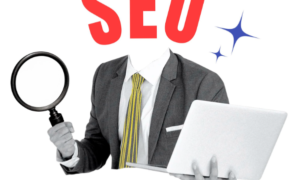Search engines such as Google are constantly assessing the information on your website to decide how it should be ranked in their results.
The process involves a series of algorithms that take into account various factors to decide where a page should rank. SEO is about more than just getting your pages ranked well; it also works towards satisfying user intent and providing helpful content.
- Optimize Your Title Tags
Title tags are essential elements of a website and can have an enormous effect on both user experience and search indexation. Not only do they assist search engines in indexing your pages, but they provide readers with vital information that encourages more clicks.
The title tag should clearly communicate to both search engines and potential visitors what your page is about and its value proposition. It should also capture users’ attention, making them eager to read further into your content.
Title tags, though relatively brief, can have a major influence on search engine visibility and click-through rates (CTRs). Therefore, it’s critical that you optimize them correctly for optimal effectiveness.
- Optimize Your Meta Descriptions
Meta descriptions are concise summaries of webpage content that appear under the page title and URL in search results. They have an indirect effect on search rankings but may also influence click-through rates.
Meta descriptions should be concise and use benefits-focused language that quickly conveys the subject matter of a page. Doing this helps readers comprehend what they will find when clicking on search results, potentially increasing their likelihood of becoming customers.
Ideally, you should create unique meta descriptions for each page of your site. Doing this helps avoid duplicate meta descriptions which could negatively affect search indexation for your website.
Seo tools: شراء باك لينك
- Optimize Your URLs
URLs are an integral component of search engine optimization (SEO), providing vital details to the engines about your content, target market and page rank in Google.
Fortunately, optimizing your URLs is a relatively straightforward and straightforward process.
Following a few basic rules is all that’s necessary.
Begin your page title with a keyword-rich phrase that clearly conveys what the page is about.
Be careful when adding underscores to words in a slug – they won’t be recognized by search engines as spaces and can be unhelpful to both humans and robots alike.
You can also substitute hyphens for capital letters when separating words in your slug. Hyphens are easier for both humans and robots to read than capitals.
- Optimize Your Images
Images play a significant role in how visitors engage with your website. They’re more captivating than text, and optimizing them correctly can improve SEO results.
Image optimization is the practice of compressing an image’s file size without compromising quality, helping your website load faster and boost its ranking on search engines.
Optimizing your images also has the advantage of taking up less server resources, increasing page speed and improving user experience.
Image optimization is an essential aspect of any online business. It doesn’t require much effort or complex SEO tactics, but can have a major effect on your site’s performance.
- Optimize Your Images with Alt Text
Image alt text, also referred to as alt tags, is an essential component of optimizing your images for search indexation. Not only does it make the web more accessible for people with visual impairments but it also helps search engines crawl and understand your website better.
Optimizing your images for SEO involves adding descriptive alt text that accurately describes the image and links it to the page content. Google uses this description to better comprehend what’s occurring in an image and its relationship to other elements on the page, ultimately improving search indexation.
If you want your focus keyword or keyphrase associated with an image, make sure it appears in its alt text where appropriate. However, avoid stuffing too many keywords into every image’s alt text since this could confuse search engines and lead to penalties.
- Optimize Your Images with Keywords
Search engines rank websites according to how well they match a search query. Therefore, producing content that satisfies user intent and adds value to the page is so crucial.
Optimizing your images with keywords is a great way to boost your website’s overall SEO and increase search indexation. To do this, include the keywords in both the file name and alt text for each image.
Additionally, visual appeal of relevant images on your website will make it stand out in search engine results pages. This holds especially true for infographics, charts and diagrams.
- Optimize Your Images with Descriptions
Images can add visual interest and depth to an article, but if they’re not optimized for SEO purposes, it could negatively affect its indexation in search results.
To help Google comprehend your content’s topic, it’s essential to include relevant and helpful alt text for each image on your website. This text should accurately depict the scene in each image while including relevant keywords.
It’s essential to include the correct file name for your image. Not only does this improve SEO on your site, but it may also have an effect on search rankings.
Don’t forget to fill in the alt attribute for each product image on your website. Doing this makes it simpler for visitors to locate what they need quickly.
Seo tips: الباك لينك
- Optimize Your Images with Keywords
Enhancing blog posts and articles with images is an excellent way to give them life, as well as boost your site’s SEO. Be sure that any images used are optimized for search engine visibility and include relevant keywords in their file names.
One of the best ways to boost image SEO is by adding structured data. This helps Google understand what your images are about so they can display them appropriately in search results. For more information on this subject, consult Google’s Structured Data General Guidelines.
Alt text is another essential element that can boost your image SEO. Make sure the alt text on each image accurately describes what the picture depicts, so both people and search engines can make sense of it.
- Optimize Your Images with Keywords
Images are an invaluable asset to aid readers in understanding your written material. Additionally, they play a significant role in search engine optimization (SEO), as they may help boost your rankings on Google image searches.
Optimizing your images with keywords can be a simple yet powerful way to enhance your SEO. By including relevant keywords in the file name, title tag, alt text, and description tags of your images, you may increase your chances of ranking higher on Google image searches.
By adding keywords to your images, you make your website accessible for visually impaired visitors. Furthermore, structured data makes images more searchable on Google when conducting image searches.
- Optimize Your Images with Keywords
Images have become an integral part of the internet, and optimizing them for search is a surefire way to boost your website’s overall SEO performance.
One of the best ways to optimize your image files for search is by giving them descriptive, keyword-rich file names. This will enable Google to quickly and easily locate your images, which in turn could boost your site’s ranking in search results.
Another effective way to boost your image SEO is by adding alt text to each image. This brief text description will appear if an image cannot be rendered, providing you with an opportunity to include relevant keywords and target phrases for your business.



































